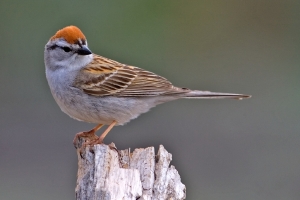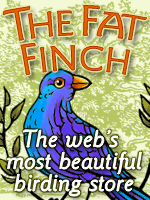 This week marks the 200th anniversary of the birth of Abraham Lincoln. More books have been written about Lincoln than any other human being with the possible exception of Jesus. Long ago, people said that it was impossible to say anything new about Lincoln, but writers and commentators keep doing it. A deluge of new books about Lincoln have been published to coincide with this anniversary and just about every commentator has noted the synchronicity or the coincidence or the conjunction of this anniversary and the election of the first Black to the American presidency.
This week marks the 200th anniversary of the birth of Abraham Lincoln. More books have been written about Lincoln than any other human being with the possible exception of Jesus. Long ago, people said that it was impossible to say anything new about Lincoln, but writers and commentators keep doing it. A deluge of new books about Lincoln have been published to coincide with this anniversary and just about every commentator has noted the synchronicity or the coincidence or the conjunction of this anniversary and the election of the first Black to the American presidency.
But, as far as we know, no one before us has marked the anniversary by saying anything about Abraham Lincoln and the birds.
Not that there is much to say. Do a word search for “bird” in the Collected Works of Abraham Lincoln and you get five hits, three of which deal with proper names of people and two in which Lincoln uses birds generically as illustrations of political points he is making. Searches for specific species come up empty. There is one mention of a generic “sparrow” in a letter to his brother in 1851 when Lincoln’s father was dying, asking his brother to remind his father of the quote from Matthew about God noting even the fall of a sparrow, presumably to comfort his father. (Lincoln did not bother to attend the funeral.)
Lincoln also referred to generic pigeons once. In the last of one of his 1858 debates with Stephen Douglas, Lincoln compared Douglas’s argument about popular sovereignty to a, “homoeopathic soup that was made by boiling the shadow of a pigeon that had starved to death.”
On another occasion, when pestered with questions about Douglas’s stand on slavery in Kansas, Lincoln responded, “In every instance the question is accompanied with an anxious inquiring stare, which asks, quite as plainly as words could, ‘Can’t you go for Douglas now?’ Like boys who have set a bird-trap, they are watching to see if the birds are picking at the bait and likely to go under.” Lincoln refused the bait and continued to assert that Douglas actually favored the extension of slavery into the western territories.

A Convocation of Politic Robins
There is a story about Lincoln saving some baby birds. Once, the story goes, when he was out “riding circuit” as lawyers did in those days, a group of lawyers came upon two baby birds that had fallen out of their nests. In one version of the story, they were Robins. All the lawyers kept riding except Lincoln who allegedly stopped, found the nest, and put the babies back in it. The other lawyers needled him and he said something to the effect that he could not have slept unless he rescued the baby birds.
To us, that resembles the tale of George Washington cutting down the cherry tree. The story is just a little too sweet.
In the first place, Lincoln was born and raised on the frontier in the early 19th Century. People seldom got all gushy about birds and other animals, which they considered food, beasts of burden, or pests. Unlike today, not many people lived in urban areas. No one in rural Kentucky or Illinois popped down to the grocery store for some meat and vegetables for supper.
Nor did they romanticize wilderness. For most, wilderness was something to be conquered, not a place to resort to for mental or emotional solace. Wilderness was a place of darkness; danger; and, occasionally, death. Modern habitat destruction, which is killing birds and animals at a far faster rate than the frontiersmen of old, was not yet even a cloud on a distant horizon.

Passenger Pigeon
In fact, the modern hobby of birding, beloved by so many, may be seen as one of earth’s responses to the habitat destruction wreaked by humans: Aware of the damage, earth propagated millions of people who bird, fish, hunt, and hike in order that a constituency be formed to protect what habitat is left.
While it is pleasant to imagine that Lincoln would approve of our efforts, he lived a long time ago in a place far different. When the sun went down, it was dark outside. And silent. The Milky Way was brightly visible. During daylight hours, the sounds of birds would have been little more noticed than we mark the sound of tires whirling down asphalt roads or the sound of airplanes overhead or any of the rest of our urban background noise. We need the birds and wildness more than Lincoln did.
________________________
While Lincoln was not a birder — no life list is found in the Collected Works — he would have noticed many species of birds around him while growing up. The National Park Service maintains a list of birds found in the vicinity of Lincoln’s childhood home.
He also would have seen birds, such as Passenger Pigeons, which are gone. He might have heard a Bachman’s Warbler, or even seen the “Lord God bird”, the Ivory-billed Woodpecker.
Credit for the The Passenger Pigeon painting goes to Hayashi and Toda (artists), Charles Otis Whitman (author), published before 1920.





 One of us just finished “Life List,” a new book by Olivia Gentile. It’s a biography of Phoebe Snetsinger who saw more species of birds than any human before her. Ms. Gentile was interviewed this week in the New Yorker’s blog,
One of us just finished “Life List,” a new book by Olivia Gentile. It’s a biography of Phoebe Snetsinger who saw more species of birds than any human before her. Ms. Gentile was interviewed this week in the New Yorker’s blog,  This week marks the 200th anniversary of the birth of Abraham Lincoln. More books have been written about Lincoln than any other human being with the possible exception of Jesus. Long ago, people said that it was impossible to say anything new about Lincoln, but writers and commentators keep doing it. A deluge of new books about Lincoln have been published to coincide with this anniversary and just about every commentator has noted the synchronicity or the coincidence or the conjunction of this anniversary and the election of the first Black to the American presidency.
This week marks the 200th anniversary of the birth of Abraham Lincoln. More books have been written about Lincoln than any other human being with the possible exception of Jesus. Long ago, people said that it was impossible to say anything new about Lincoln, but writers and commentators keep doing it. A deluge of new books about Lincoln have been published to coincide with this anniversary and just about every commentator has noted the synchronicity or the coincidence or the conjunction of this anniversary and the election of the first Black to the American presidency.







